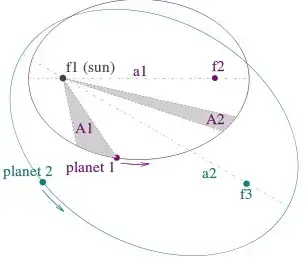Yesterday my brother asked me how orbits work. Suppose for the sake of the question that you are trying to put a rocket in orbit around the Earth. I explained that orbiting is essentially being in free fall while going very fast sideways, so that by the time you fall, there's no ground anymore and you keep going.
He said he understands that. His question was about why, after doing a full revolution around the Earth, you end up in the same place with the same velocity instead of doing, say, an inwards spiral. I admit I was stumped by this. Obviously, conservation of angular momentum prevents you from spiraling down to the center, but I see no reason why, at least in principle, you couldn't have a spiral orbit with an amplitude that increases and decreases periodically.
Is there an explanation for this that doesn't involve actually doing the math? Of course, the equations say this doesn't happen, but that doesn't help me understand any better, nor does it help me explain it to my brother.
